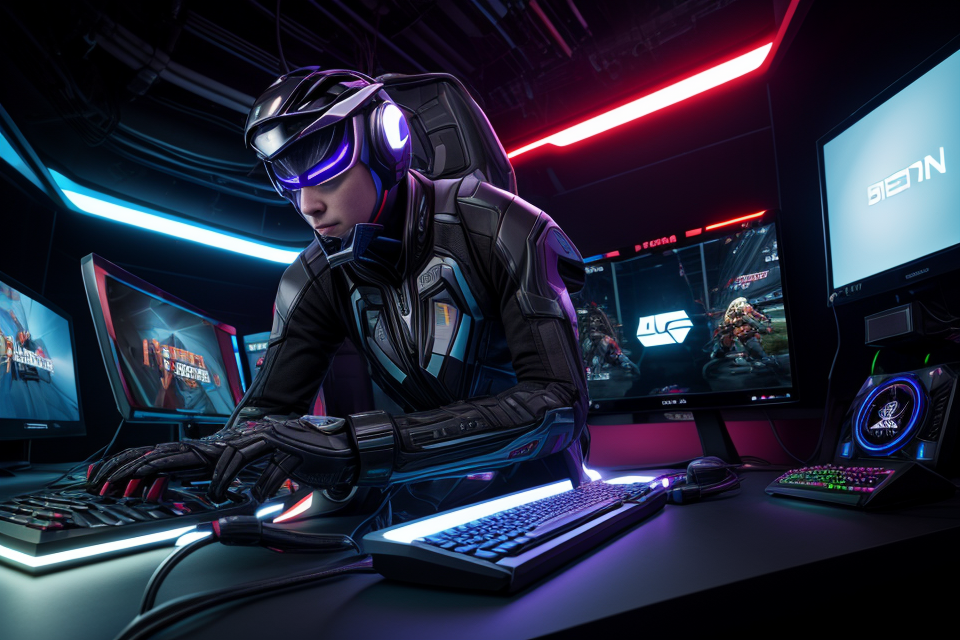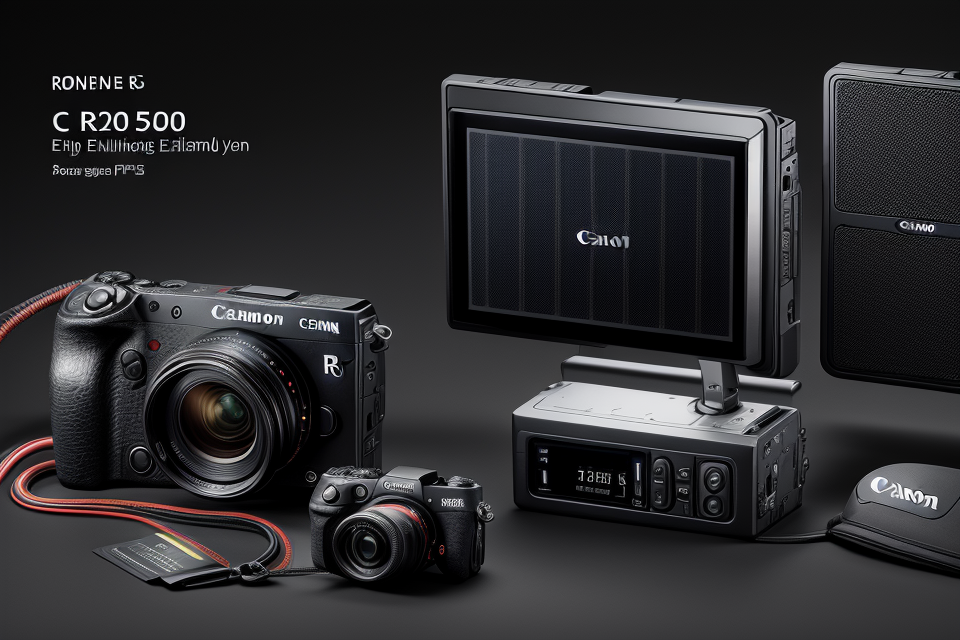
Building a gaming PC is an exciting journey for any gamer, but the question of which component to buy first can be confusing. Some may argue that the CPU is the most important component, while others swear by the power of a high-end graphics card. In this guide, we will explore whether it’s worth buying a graphics card before a CPU, particularly for entry-level gamers. We’ll examine the pros and cons of this approach and help you make an informed decision. So, gear up and let’s dive into the world of PC gaming!
It is generally recommended to buy a CPU before a graphics card because the CPU is the primary driver of performance in a computer. A graphics card can certainly enhance the visual experience of gaming or other graphics-intensive tasks, but it will not provide any significant performance benefits without a capable CPU to accompany it. For entry-level graphics cards, it is particularly important to ensure that the CPU is sufficient, as a high-end graphics card will not be able to compensate for a weak CPU. Therefore, it is generally not worth buying a graphics card before a CPU for entry-level graphics cards.
What is a graphics card?
What does a graphics card do?
A graphics card, also known as a display card or video card, is an expansion card that is responsible for producing the images that are displayed on a computer screen. The primary function of a graphics card is to process and render images and video, making it an essential component for tasks such as gaming, video editing, and graphic design.
In addition to rendering images and video, a graphics card is also responsible for handling complex calculations and rendering effects such as lighting, shadows, and reflections. These calculations are performed by the graphics processing unit (GPU), which is a specialized processor that is designed specifically for handling graphical tasks.
Furthermore, a graphics card plays a crucial role in displaying high-quality graphics. It can handle a higher resolution and refresh rate than the CPU, which means that it can display more detailed and smoother images. This is particularly important for tasks such as gaming, where a high-quality graphics card can make a significant difference in the overall gaming experience.
Overall, a graphics card is a crucial component for any computer that is used for tasks that require high-quality graphics rendering, such as gaming, video editing, and graphic design. Its ability to handle complex calculations and render high-quality images and video makes it an essential component for any computer that is used for these tasks.
Why is a graphics card important?
A graphics card, also known as a video card or display card, is an expansion card that is designed to generate images that are displayed on a monitor. It is an essential component of a computer system, particularly for tasks that require high-quality graphics or intense computational power.
There are several reasons why a graphics card is important:
- Enhancing gaming performance: A graphics card is crucial for gamers who want to experience smooth and seamless gameplay. High-end graphics cards can handle complex graphics and animations, ensuring that games run smoothly even at high resolutions and frame rates.
- Improving video editing and rendering: Video editing and rendering software can be very demanding on a computer’s graphics processing unit (GPU). A powerful graphics card can significantly speed up the rendering process, allowing video editors to work more efficiently and produce higher-quality content.
- Boosting overall system performance: In addition to gaming and video editing, a graphics card can also improve the overall performance of a computer system. Many tasks, such as 3D modeling, scientific simulations, and artificial intelligence, rely heavily on the GPU for processing power. A powerful graphics card can offload some of the work from the CPU, improving system performance and efficiency.
Overall, a graphics card is an essential component for anyone who needs high-quality graphics or intensive computational power. Whether you are a gamer, video editor, or simply need a powerful computer system, investing in a good graphics card can make a significant difference in your overall computing experience.
How does a graphics card affect gaming?
A graphics card, also known as a display card or video card, is a hardware component that is responsible for rendering images and videos on a computer screen. In the context of gaming, a graphics card plays a crucial role in delivering smooth and high-quality visuals. Here are some ways in which a graphics card affects gaming:
- Handling graphics-intensive games: Graphics-intensive games require a lot of processing power to render complex graphics and animations. A high-end graphics card can handle these demands and provide a seamless gaming experience. On the other hand, a low-end graphics card may struggle to keep up with the game’s requirements, leading to slow frame rates and poor performance.
- Smoother frame rates and higher resolutions: A graphics card can also impact the frame rate and resolution of a game. Frame rate refers to the number of frames per second (FPS) that a game can render, while resolution refers to the number of pixels on the screen. A high-end graphics card can provide higher frame rates and resolutions, resulting in smoother and more detailed visuals.
- Better in-game visuals and effects: In addition to handling graphics-intensive games, a graphics card can also enhance the overall visual quality of a game. This includes features such as anti-aliasing, which smooths out jagged edges in graphics, and shadows, reflections, and lighting effects that enhance the realism of the game environment. A graphics card can also support higher color depths and refresh rates, which can provide a more immersive gaming experience.
Should you buy a graphics card before a CPU?
Pros of buying a graphics card first
More budget-friendly
- Purchasing a graphics card before a CPU can be more budget-friendly as graphics cards tend to have a lower price point compared to CPUs, especially for entry-level builds.
- This allows for more funds to be allocated towards other components such as memory, storage, and a better CPU.
More flexibility in choosing a CPU
- With a dedicated graphics card, the CPU requirements are reduced, giving the user more flexibility in choosing a CPU that fits their budget and meets their needs.
- This can also allow for upgrading other components in the future without having to upgrade the CPU as well.
Future-proofing
- Investing in a graphics card before a CPU can provide future-proofing for a build.
- As graphics technology advances, a higher-end graphics card can support newer games and applications that require more graphical processing power.
- This can save the user from having to upgrade their CPU in the future to keep up with technology advancements.
Cons of buying a graphics card first
While purchasing a graphics card before a CPU might seem like a reasonable choice, there are several potential downsides to consider. One of the primary concerns is the potential for bottlenecking. Bottlenecking occurs when one component of a computer system, in this case, the CPU, fails to keep up with the performance of another component, the graphics card. This can lead to decreased overall performance and may result in a less than optimal gaming experience.
Additionally, purchasing a graphics card before a CPU can result in lower CPU performance. A high-end graphics card may require a more powerful CPU to function at its best, and without a suitable CPU, the graphics card may not perform at its peak capabilities. This can result in decreased overall system performance and may impact the lifespan of the CPU.
Lastly, buying a graphics card before a CPU may result in less effective use of budget. It is important to consider the cost of both the CPU and the graphics card when building a computer system. Purchasing a high-end graphics card before a CPU may result in overspending on the graphics card and not having enough budget left over for a suitable CPU. This can result in a less than optimal system that does not perform as well as expected.
In conclusion, while purchasing a graphics card before a CPU may seem like a good idea, it is important to consider the potential downsides. Bottlenecking, lower CPU performance, and less effective use of budget are all potential concerns when making this decision. It is important to carefully consider the needs of the computer system and the role that each component will play before making a purchasing decision.
Deciding factor: Your intended use
When deciding whether to purchase a graphics card before a CPU, it is essential to consider your intended use for the computer. Here are some common uses and how they can impact your decision:
Gaming
If you are a gamer, then you will likely benefit from having a powerful graphics card. Graphics cards are responsible for rendering images and animations in games, and a higher-end graphics card can provide smoother frame rates and better graphics quality. Therefore, if you prioritize gaming performance, it may be worth investing in a graphics card before a CPU.
Video editing and rendering
On the other hand, if you plan to use your computer for video editing or rendering, then a powerful CPU may be more important than a high-end graphics card. Video editing and rendering applications are heavily dependent on the CPU’s processing power, as they require the CPU to handle tasks such as encoding and decoding video files. Therefore, if you prioritize video editing or rendering performance, it may be more beneficial to invest in a high-end CPU before a graphics card.
General use
If you do not have a specific use in mind, then it may be best to prioritize a balanced system with both a good CPU and graphics card. A balanced system will provide good performance for both general use tasks such as web browsing and productivity, as well as gaming and multimedia applications. Therefore, it may be best to wait until you have a clear idea of your intended use before investing in either a CPU or graphics card.
How to choose an entry-level graphics card
Factors to consider
When choosing an entry-level graphics card, there are several factors to consider. These include:
- Budget: Determine how much you are willing to spend on a graphics card. Keep in mind that a higher budget may allow for more options and better performance.
- Compatibility with CPU and motherboard: Make sure the graphics card is compatible with your CPU and motherboard. Check the manufacturer’s website for compatibility information and any necessary drivers or software.
- Power supply and cooling requirements: Consider the power supply and cooling requirements of the graphics card. Ensure that your power supply is sufficient and that your case has adequate cooling to prevent overheating.
- Performance needs: Determine the specific tasks or games you will be using the graphics card for. Research the recommended specifications for those tasks and choose a card that meets or exceeds those requirements.
Popular entry-level graphics cards
When it comes to choosing an entry-level graphics card, there are several options available in the market. Here are some of the most popular ones:
NVIDIA GeForce GTX 1660 Super
The NVIDIA GeForce GTX 1660 Super is a powerful graphics card that offers excellent performance for entry-level gaming. It features 6GB of GDDR6 memory and 1408 CUDA cores, making it capable of handling most modern games at 1080p resolution. It also has a boost clock speed of 2080 MHz, which helps to ensure smooth gameplay even during intense scenes.
AMD Radeon RX 580
The AMD Radeon RX 580 is another popular entry-level graphics card that offers great performance for gaming and other graphics-intensive applications. It has 8GB of GDDR5 memory and 2304 stream processors, which allow it to handle most games at 1080p resolution with ease. It also has a boost clock speed of 1545 MHz, which helps to ensure smooth gameplay even during intense scenes.
NVIDIA GeForce GTX 1650 Super
The NVIDIA GeForce GTX 1650 Super is a more budget-friendly option for entry-level gaming. It has 4GB of GDDR6 memory and 1280 CUDA cores, which make it capable of handling most modern games at 720p resolution. It also has a boost clock speed of 1620 MHz, which helps to ensure smooth gameplay even during intense scenes.
Overall, these are just a few examples of the many entry-level graphics cards available in the market. When choosing a graphics card, it’s important to consider factors such as the card’s performance, memory, and clock speed to ensure that it meets your needs and budget.
Comparison of popular entry-level graphics cards
When choosing an entry-level graphics card, it is important to compare popular options available in the market. Here are some popular entry-level graphics cards that you can consider:
NVIDIA GeForce GTX 1660 Super vs AMD Radeon RX 580
The NVIDIA GeForce GTX 1660 Super and AMD Radeon RX 580 are two popular entry-level graphics cards that offer similar performance. The NVIDIA GeForce GTX 1660 Super has 6GB of GDDR6 memory, while the AMD Radeon RX 580 has 8GB of GDDR5 memory. Both cards have a base clock speed of 1470 MHz and a boost clock speed of 1725 MHz. However, the AMD Radeon RX 580 has a higher power consumption of 225W compared to the NVIDIA GeForce GTX 1660 Super’s 125W.
In terms of performance, both cards can handle most entry-level games at 1080p resolution with decent frame rates. However, the AMD Radeon RX 580 has a slight edge in gaming performance due to its higher memory capacity. Additionally, the AMD Radeon RX 580 has better support for multi-monitor setups, with the ability to drive up to four displays compared to the NVIDIA GeForce GTX 1660 Super’s two display support.
NVIDIA GeForce GTX 1650 Super vs NVIDIA GeForce GTX 1660 Super
The NVIDIA GeForce GTX 1650 Super and NVIDIA GeForce GTX 1660 Super are both entry-level graphics cards from NVIDIA. The NVIDIA GeForce GTX 1660 Super has 6GB of GDDR6 memory, while the NVIDIA GeForce GTX 1650 Super has 4GB of GDDR6 memory. Both cards have a base clock speed of 1470 MHz and a boost clock speed of 1725 MHz. However, the NVIDIA GeForce GTX 1660 Super has a higher TDP of 125W compared to the NVIDIA GeForce GTX 1650 Super’s 75W.
In terms of performance, the NVIDIA GeForce GTX 1660 Super has a significant advantage over the NVIDIA GeForce GTX 1650 Super. The extra memory capacity of the NVIDIA GeForce GTX 1660 Super allows it to handle more demanding games and tasks with ease. Additionally, the NVIDIA GeForce GTX 1660 Super has better support for modern technologies such as DirectX 12 and Vulkan.
Overall, when choosing an entry-level graphics card, it is important to consider factors such as memory capacity, performance, and power consumption. By comparing popular options like the NVIDIA GeForce GTX 1660 Super, AMD Radeon RX 580, NVIDIA GeForce GTX 1650 Super, and NVIDIA GeForce GTX 1660 Super, you can make an informed decision that meets your needs and budget.
FAQs
1. Is it okay to buy the GPU first?
Yes, it is okay to buy the GPU first if you already have a capable CPU that can support it. If you are planning to upgrade your CPU and GPU together, it is recommended to buy them both at the same time to ensure compatibility. However, if you only want to upgrade your GPU and already have a decent CPU, then buying the GPU first is a good option.
2. Will my current CPU be able to handle a new GPU?
If you are planning to upgrade your GPU, it is important to check if your current CPU is compatible with it. Generally, a newer GPU will require a more powerful CPU to perform optimally. So, if you are planning to buy a high-end GPU, it is recommended to have a CPU that can support it. However, if you are buying an entry-level GPU, your current CPU should be able to handle it.
3. Can I upgrade my GPU without upgrading my CPU?
Yes, you can upgrade your GPU without upgrading your CPU, but it is important to note that the performance gains may not be significant. Upgrading your GPU alone will not be enough to provide a noticeable improvement in performance, especially if your CPU is already outdated. It is recommended to upgrade both your CPU and GPU together for optimal performance.
4. How do I know if my CPU can handle a new GPU?
To check if your CPU can handle a new GPU, you need to check the GPU’s system requirements and compare them to your CPU’s specifications. Look for the minimum and recommended CPU requirements for the GPU you are planning to buy. If your CPU meets or exceeds these requirements, then it should be able to handle the new GPU.
5. Will upgrading my GPU improve my gaming experience?
Upgrading your GPU can improve your gaming experience, but it depends on several factors such as the type of games you play, your CPU’s specifications, and the quality of your monitor. If you are playing games that are graphically intensive, upgrading your GPU can make a significant difference in performance and provide a better gaming experience. However, if you are playing less demanding games, the performance gains may not be as significant.


